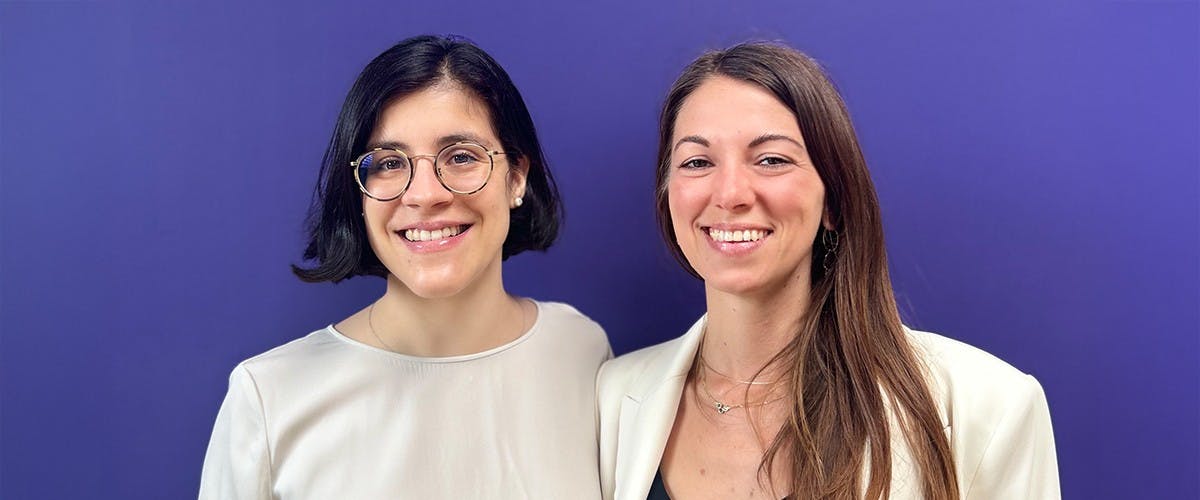belong to everyone
Altisensi: The Art of Training Creativity and Challenging One's Limits
They do it for a living, and they’ve taught us that creativity isn’t a rare talent—but a human ability that can be awakened, nurtured, and trained. They are Altisensi. Two young women, a powerful vision. And an insight that made us reflect on what growing together in a company and in life really means.

“Divergent thinking is a cross-cutting cognitive skill developed in childhood through imaginative play.” This is where the journey of Altisensi begins—designed to train a form of thinking that, over time, tends to rust but never disappears. “It’s a bit like learning to ride a bicycle when you’re little, not riding it for years, and then, with a good dose of courage and initial hesitation, getting back in the saddle.”
With this image, founders Paola Maria Sala and Marianna Brescanin articulate the intuition that sparked their work: creativity can be cultivated even in adulthood, becoming a powerful tool for personal and collective growth. “A form of thought open to possibility and the unexpected—urging us to step out of our comfort zone, free ourselves from self-imposed limits, and explore new modes of self-expression. Creativity, then, is not reserved for a few, nor does it fade with age—it’s like a muscle we can awaken and train.”
They bring this idea everywhere—in schools, associations, companies—and they helped us adopt it: creativity can become an engine of personal and collective development, if we give it space and learn not to fear it.
Our introduction to them came through Teddy 500, our internal business school designed to foster awareness and widespread entrepreneurship within the group. That’s where we met Altisensi, and suddenly something sparked. Paola and Marianna helped us see anew what might already have been inside us: nurturing creativity in a company is not a luxury, but a necessity—especially for those like us who believe in building a company that can last “500 years,” by growing with its people.
“The first word that comes to mind to describe these first two meetings is freedom,” they say. “Our initial impression was of a group very free to express themselves, where ideation processes are fluid, and the liveliness of each person is palpable after just a few minutes of workshop.”

In Teddy, Altisensi found a company ready to make room for play as a relational and transformative tool. “When play is unstructured and non-judgmental, it isn’t escapism but a serious gesture that activates active listening, exchange, and trust within groups. It’s where barriers fall, roles lose rigidity, ideas flow freely, and relationships build authentically.”
Their vision speaks the same language as Teddy’s founding values: community, listening, personal responsibility. “Play becomes a concrete tool to reinforce a sense of belonging, because it allows everyone to contribute with their uniqueness and feel like an active part of a shared process.” And this is exactly what Teddy 500 aims to stimulate: an awareness of being “entrepreneurs of oneself” within a living, open, and communal system.
In Altisensi’s approach, creativity is always a collective matter. "We coined the term Group Creativity and the possibility of monitoring and training it together, precisely to underscore that creativity is a deeply collective process." A creative community, they explain, is built when people feel "seen, welcomed, and free to express themselves without fear of judgment.” That’s why you need safe spaces, equal dialogue, acceptance of mistakes, open stimuli—and… time.
Time to experiment, delve deeper, make mistakes, and transform. But also—as they've taught us—to boredom. Because true boredom conceals the seed of invention: the freedom to create without an immediate goal, the opportunity to form new connections, the possibility of finding answers outside the already known. Not placing limits, accepting uncertainty, allowing ideas to emerge when they’re ready: that too is creative training.

They often speak about unconventional leadership, because leading is also a creative act. “A leader today is not someone who knows all the answers, but someone with a keen ability to listen and valorize everyone’s talents and skills.” A creative mind, they add, can "spot connections where none seem to exist, see the big picture, perceive the forest beyond the trees." That’s how an organization transforms into an environment of well-being and innovation, where every person is part of a plural intelligence.
The company climate is also crucial in their paths: “An organization can become a place that nurtures well-being and growth through creativity, creating an open and stimulating workplace where people feel free to use their creative thinking.” Valuing diversity, encouraging cross-team synergy, giving more space to questions than to answers—these are, for Altisensi, the ingredients of a culture that generates belonging.

And belonging, in the end, is at the heart of everything. “For us, belonging means feeling recognized, accepted, and appreciated for one’s authenticity by one’s reference group.” Creative work helps strengthen this identity: “It allows one to continuously express one’s uniqueness without being overwhelmed by internal and external contradictions and changes in the work sphere.” To live creatively, they say, is the deepest way to exist in the world with coherence, even amid constant change.
In this meeting between Altisensi and Teddy, what emerges is a shared horizon: an idea of a company as a living community where each person can be themselves, learn, and contribute. Where creativity is a form of care. Where the most revolutionary act is to listen—and let yourself be surprised. And perhaps this is the greatest lesson: creativity can be trained, even as adults. And doing it together—in a group, within a company, as a community—is the first step toward building a future truly worth growing into.